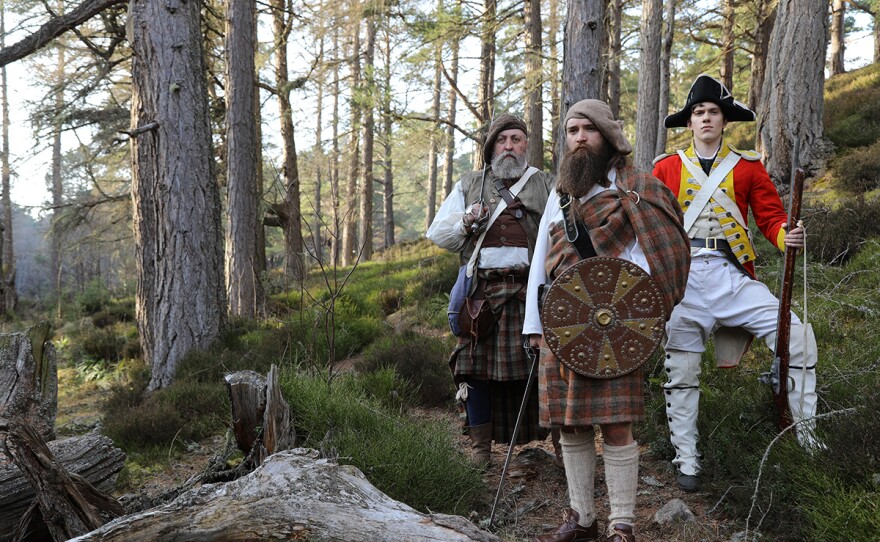Premieres Wednesday, Jan. 18, 2023 at 8 p.m. and Sunday, Jan. 22 at 3 p.m. on KPBS TV + Sunday, Jan. 22 at 8 p.m. on KPBS 2 / PBS Video app
Few beings have lived to see a 500-year sweep of history - and at a time of such unprecedented change. NATURE “Wildheart” is the remarkable biography of a noble Scots Pine tree, ancient, gnarled, and weather worn. It stands in the Scottish Highlands, exactly where it landed as a tiny seed some five centuries ago - and where it greeted a young Mary, Queen of Scots, who was then just a child herself. It becomes the heart of a magnificent highland wilderness, home to eagles and wolves, strutting capercaillies and feisty red squirrels.
Featured Creatures:
- Atlantic salmon
- Black grouse
- Dipper
- European crested tit
- Golden eagle
- Osprey
- Pine marten
- Red squirrel
- Scottish wood ant
- Timberman beetle
- Western capercaillie
Buzzworthy Moments:
- Crowned at just nine months old, Mary Queen of Scots was hidden as a child in the Scottish Highlands. With her maid, she would have been among the first to witness the birth of Wildheart in the 1500s.
- Capercaillies, birds that live and breed amongst the Scots pines, have an intimate relationship with the tree. The male birds’ bizarre popping call summons females, but first they must compete for the right to mate exclusively with all the hen capercaillies.
- The only aquatic songbird in the world, dippers can dive beneath the surface to harvest insect larvae and tiny fish. A pair’s brood of chicks is ready to fledge, but an unseasonal downpour transforms the benign river into a raging torrent. The parents need to coax the chicks out of the nest as quickly as possible to get them to safety. They do so by offering tasty morsels to draw them out of the nest.
Noteworthy Facts:
- The world around the Scots pines is complex and diverse. The highlands are home to 172 insect species, 200 fungi species and a rich array of birds and mammals.
- Red squirrels spend 90% of their time in the treetops. With double-jointed ankles and small sharp claws, they are expertly adapted to climb and leap among the branches.
- The Timberman is Scotland’s longest beetle. It spends four years in a larval stage beneath the surface of the tree’s bark. Its adult lifespan will only last a third of the time it spent beneath the bark.

Watch On Your Schedule:
NATURE is available for streaming concurrent with broadcast on all station-branded PBS platforms, including PBS.org and the PBS Video App, available on iOS, Android, Roku streaming devices, Apple TV, Android TV, Amazon Fire TV, Samsung Smart TV, Chromecast and VIZIO.

Credits:
A production of Maramedia Ltd and The WNET Group in association with ARTE G.E.I.E. The documentary is written and produced by Nigel Pope. Thoren Ferguson is narrator and Jackie Savery is executive producer for Maramedia. NATURE is a production of The WNET Group. Fred Kaufman is executive producer. Bill Murphy is series producer and Janet Hess is series editor.





